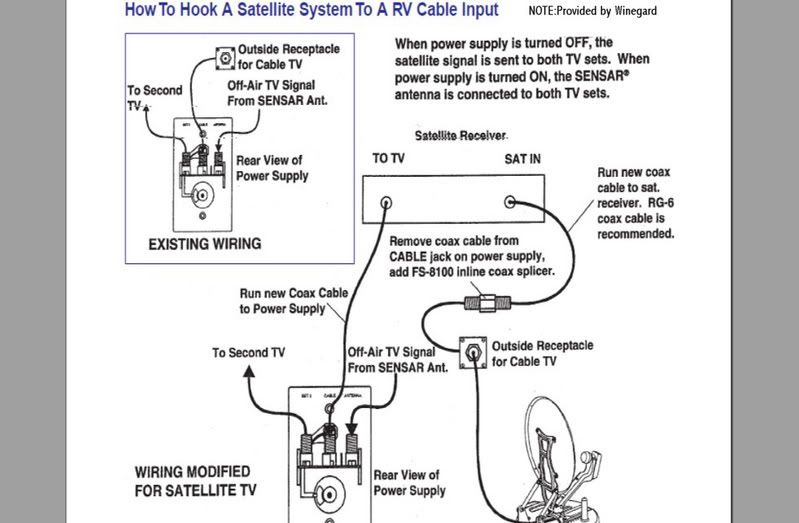erniebpk
Jul 14, 2014Explorer
Cable TV
Good morning,
I have a 2008 Weekend Warrior SLC 3505 fifth wheel toy hualer. I tried hooking up my direct tv cable from home to the connector thats on the outside of my trailer. I get no signal / service when i conncet my dircet tv box inside the trailer. I have tried turning on / off that power button thats on the wall plate next to the cable connector and ac plug, but still no luck. Am i doing something wrong? Is the outside cable connector for when you go to campsites that have cable ready hook ups?
Please help,
Ernie.
I have a 2008 Weekend Warrior SLC 3505 fifth wheel toy hualer. I tried hooking up my direct tv cable from home to the connector thats on the outside of my trailer. I get no signal / service when i conncet my dircet tv box inside the trailer. I have tried turning on / off that power button thats on the wall plate next to the cable connector and ac plug, but still no luck. Am i doing something wrong? Is the outside cable connector for when you go to campsites that have cable ready hook ups?
Please help,
Ernie.
